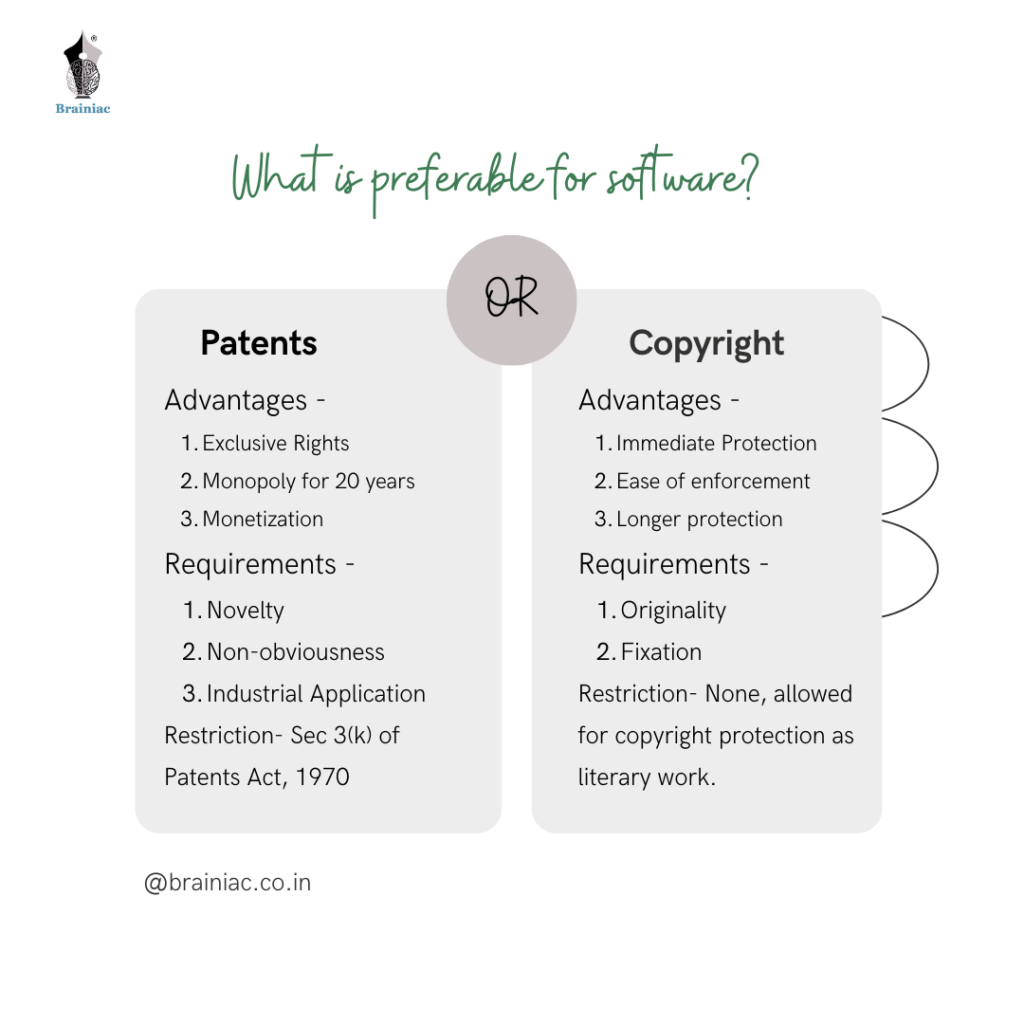Introduction
In the digital age, software has become the lifeblood of innovation, powering countless applications and services. Protecting the intellectual property (IP) of software developers and companies is crucial. Two primary options for safeguarding software creations are copyright and patent protection. In the context of India, the choice between these two mechanisms holds significant implications. This article will delve into the nuances of copyright and patent protection for software in India.
Copyright Protection
Copyright is the most common form of IP protection for software in India, as it is worldwide. Under copyright law, the expression of an idea in a tangible medium, such as source code, is automatically protected upon creation. This protection grants the copyright holder exclusive rights to reproduce, distribute, and adapt the software. The advantages of copyright protection are manifold:
Firstly, copyright protection is immediate and does not necessitate formal registration, ensuring that creators enjoy protection as soon as their software is created. This ease of accessibility has made it a popular choice among software developers worldwide.
Secondly, enforcing copyright is relatively straightforward, as it primarily targets direct copying or replication of the software, making infringement easier to identify and pursue through legal channels.
Lastly, copyright protection offers a lasting shield, typically extending for the lifetime of the author plus an additional 70 years. This prolonged coverage ensures long-term security for the creators and their intellectual property.
In India, software is recognized as a literary work under the Copyright Act, making it eligible for copyright protection. This aligns with the practices of many common law countries, including the United States and the United Kingdom, where software enjoys similar copyright protection.
Patent Protection
Software must meet specific criteria to qualify for patent protection in India and other common law countries. It should be novel, introducing new concepts or approaches. Non-obviousness is crucial, requiring innovation beyond common knowledge. Practical application is paramount, with software expected to solve real-world problems. Patents reward innovation and provide temporary market dominance, but their responsible management is essential for industry progress.
The advantages of patent protection include the grant of exclusive rights to make, use, and sell the patented software, offering formidable protection against competitors. Patents also establish a temporary monopoly, enabling inventors to capitalize on their innovation. Moreover, patents can be monetized through licensing agreements and often enhance the value of a software company.
Section 3(k) of the Indian Patents Act
In India, software patent eligibility is shaped by Section 3(k) of the Indian Patents Act, 1970. This provision explicitly states that “a mathematical or business method or a computer programme per se or algorithms” are not patentable subject matter. In essence, software, in its pure form, is not eligible for patent protection in India unless it demonstrates a “technical effect” or solves a specific technical problem.
The presence of Section 3(k) has led to a more cautious approach to software patents in India compared to the United States. In India, software inventions must go beyond mere algorithms or mathematical methods and have a practical application or a specific technical effect to be considered for patent protection. This requirement has led to many software-related patent applications being rejected in India, making copyright protection a more commonly pursued avenue for software developers to protect their creations.
In contrast to India’s cautious stance on software patents, the United States has been historically more permissive, leading to a higher number of software-related patents being granted. The United Kingdom also follows a similar approach to the United States in terms of software patent eligibility.
Conclusion
In conclusion, the choice between patent and copyright protection for software depends on several key factors. Copyright, with its accessibility and automatic protection, tends to be the preferred route for many software developers, especially in India where patenting can be challenging due to Section 3(k).
However, if a developer is focused on fostering innovation and gaining a temporary market edge, patent protection can offer significant advantages, albeit with more complexities to navigate.
Ultimately, the decision should be based on the software’s nature, the goals of the developer or company, and the legal framework of the jurisdiction. Adaptability is key, as the ever-changing tech landscape may require a hybrid strategy that combines copyright and patent protection. The preferred choice should align with the intellectual property protection strategy that best serves the long-term objectives of the software creators or businesses.
Patents undoubtedly provide broader protection, preventing others from implementing the same concept in a different format, while copyright safeguards the source code and the unique expression of the software.


